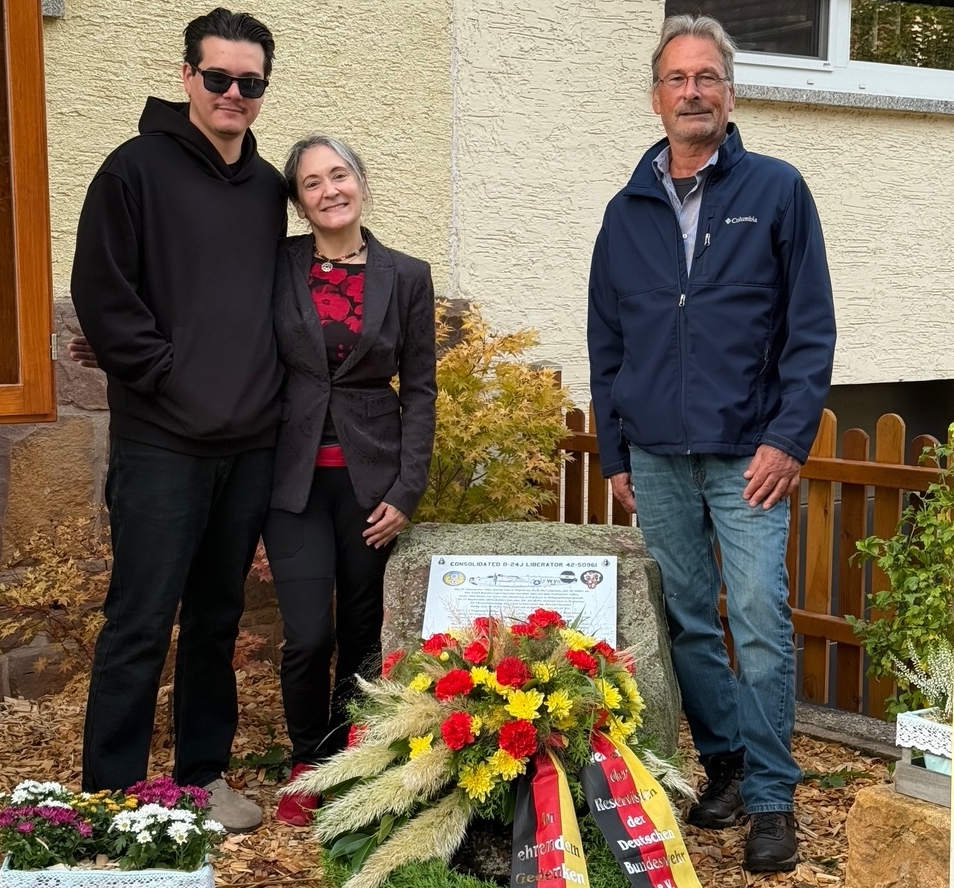Mission to Kassel - Briefing

By Bill Dewey, as told to Linda Alice Dewey
The following is a description of the briefing process. At the time, pilot Bill Dewey was embarking on his mission August 8 to Dessau. It turned out to be a rough mission, and he flew the same plane he would fly on the Kassel Mission. It’s a pretty good description of what the guys went through before a mission, so we’re including it here.
Briefing
Colonel Jones [the group commander] wasn’t an outgoing, garrulous guy. He was quiet. At the officers’ mess, he’d sit with his peers, joining in the conversation. Don McCoy, on his staff, had come over from the States with Jimmy Stewart and the original group, along with Major Kreidler, my original squadron commander and Major Maurice Casey, another squadron commander. Casey would give me my final rating when I left the base—Superior.
We got dressed and went to mess hall for breakfast in the dark, then to briefing. It was a long path to the mess hall. There wasn’t much talking. I never ate much breakfast. I should have, but I didn’t.
Then we went to the main auditorium, briefing room, where all the crews and the ground personnel were—about 350-400 people in the room. Either Colonel Jones or one of the top brass was always on the mission and at the briefing. The group air commander that ran the mission for that day would always give a talk at the briefing.
If you’ve seen the war movies, it happened just like in the movies. They raised the curtain and the red thread curved over the North Sea [to Germany]. We’d have to be at 18,000 by the time we hit landfall. At low altitude, they’d have been able to knock us out of the sky. The higher the altitude, the less accurate was the flak.

Today would be a maximum effort. There were 14 groups in the Second Air Division, four combat wings each. There were 3 divisions in the 8th AF, two were B-17’s, one was B-24’s. By this time, the second Air Division was the only all-B-24 Division. We had 14 groups, four combat wings in the second. Each wing had 3 different groups with their own airfields under them. One group was all black B-24’s, night flyers that dropped men and materials behind enemy lines. For a maximum effort, every group sent out 40 planes. Each airfield had 60-65 planes. Getting 40 ready overnight from the day’s decimation of the day before, was an effort.
Our plane’s name was a code name, Wallet 855 A-Able. Every plane had a different letter of the alphabet. 855 was the last 3 digits of the plane’s serial number. The plane was built in 1942 at the Ford Willow Run plant, a B-24 J. Which came after the B-24 H models, which were painted with green camouflage. The paint slowed the plane down and didn’t give them an advantage. So this J plane was shiny silver. Every squadron had a code name. Wallet was the 701st. Displease was for another. B-24’s would go all the way up to L’s and M’s that had all kinds of improvements, including hydraulic steering. Wonderful. But this was all at the end of the war. Better seats. Smoother.
The intelligence officer came out to tell us what we could expect on flak, enemy opposition, the exact target, a munitions plant. Then the meteorologist officer gave us the weather briefing. Then the air commander gave us the basic information on where we would be in the bomber stream and where our wing and our group would be in the formation and the times we were scheduled to be on target. There would be a wing rally point, a division rally point, time at the enemy coast, time for the initial bombing run, group rally point, and withdrawal, and ETA for our return.
After that, we broke up into our specialties. Pilots and copilots stayed in the briefing room. Everyone else broke up to group briefings—navigators, bombardiers, gunners, radio operators all went to different school rooms.
Then we went to our lockers in the Ready Room, a whole building full of lockers, where all the crews went to get our electric flying suits. We took off our electric flying suits, gloves and helmets and were issued our parachutes at a separate building along with our Mae West life jackets that we wore over our flying jackets. I had a backpack parachute. Some of the others would get chest packs that they couldn’t wear when they were shooting or trying to navigate or see the bombing target, because they got in the way.
We assembled as a crew outside the ready room and waited for a 6 x 6, got in the truck that took us to our hardstand, the concrete pad where the plane sat, waiting.
© 2019 Linda Alice Dewey, All rights reserved





